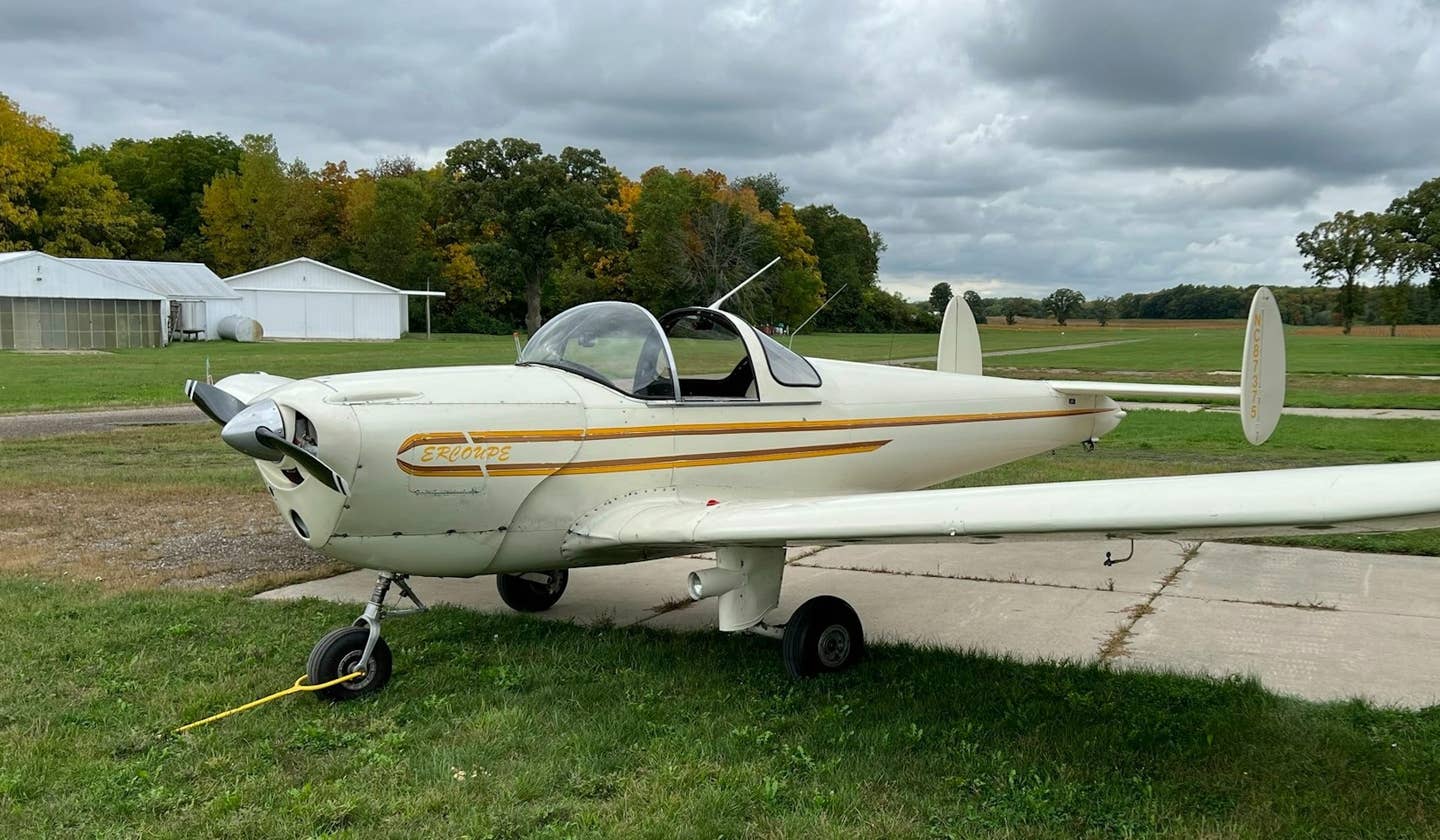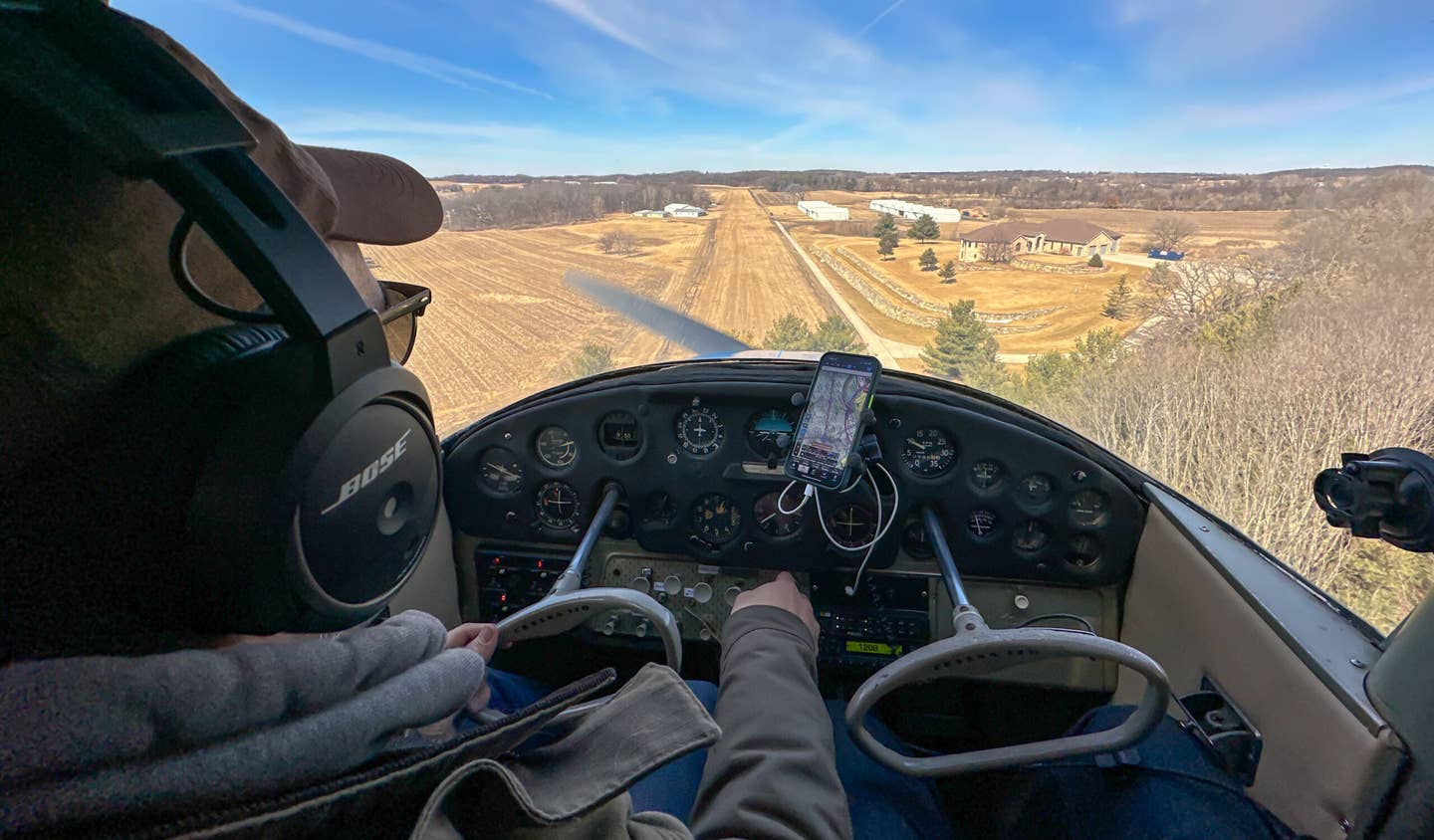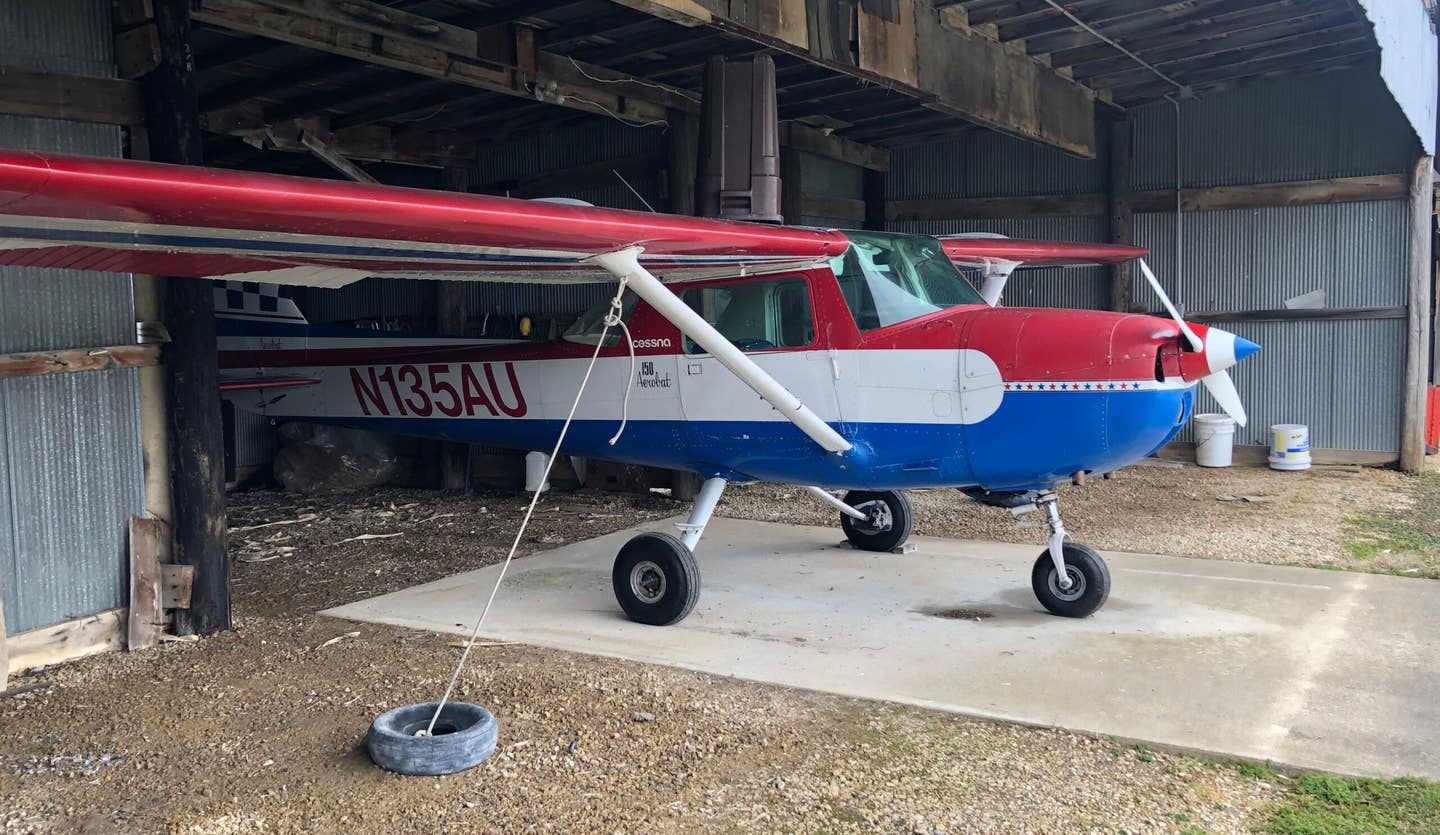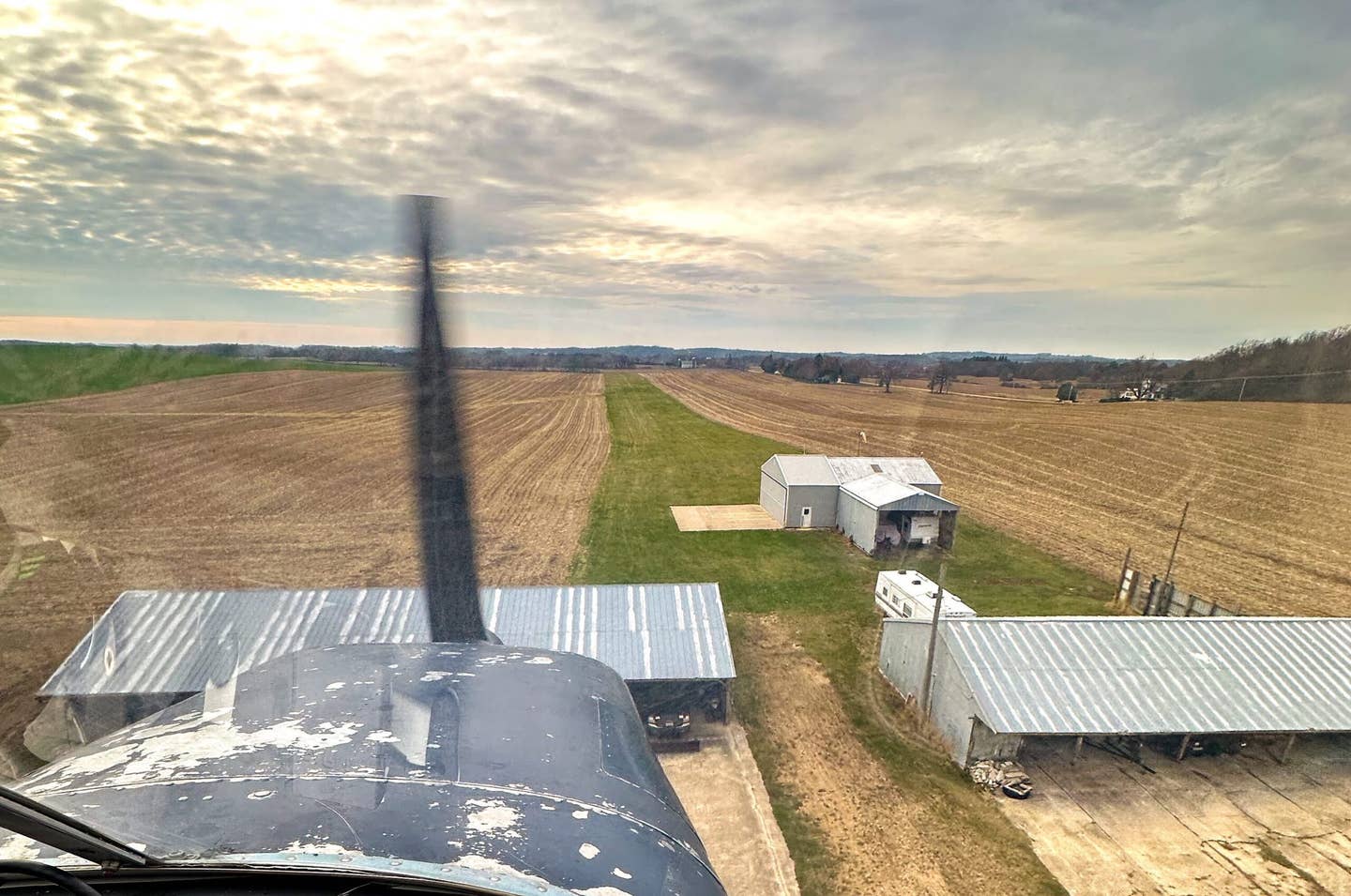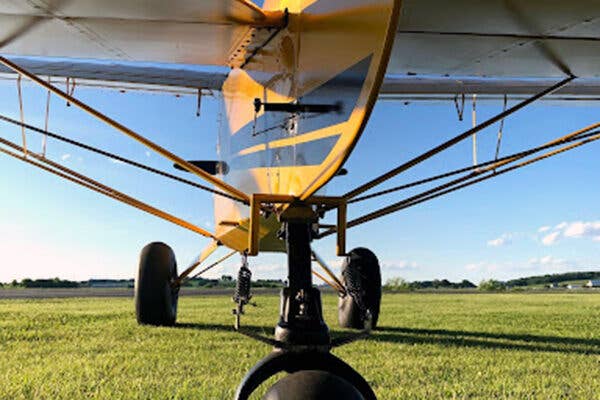
A look at an Aviat Husky equipped with tundra tires. Jason McDowell
At some point, a pilot shopping for an airplane will inevitably arrive at a certain fork in the road on their journey to ownership: the decision of whether to go with tricycle gear or a taildragger.
For some, it’s a decision they skip right over without a second thought. A pilot with his or her heart set on a fast retract like a Mooney or Bonanza, for example, won’t have much interest in a tailwheel airplane. Some might fall in love with a jaunty Globe Swift or a handsome Bellanca Crusair, but when it comes to retracts, speed usually involves a nosewheel.
Many of us, however, have spent a lot of time at that fork, weighing the various pros and cons of each configuration.
The Hype of the Taildragger
Social media in general and YouTube in particular do a fantastic job of highlighting some of the strengths of the tailwheel configuration. Kitfox and Super Cub owners bound into and out of mountaintop clearings, their taildraggers holding propellers well clear of rocks and brush while the beefy gear and tundra tires shrug off impacts and absorb the rough surfaces.
Although plenty of tricycle-gear aircraft can also tackle such challenging terrain, the nosewheel is the weak point. A hard hit can damage the nose strut and firewall, and should the nose wheel drop into an unseen gopher hole, propeller and engine damage can easily result.
The Quandary
For pilots planning to explore these challenging environments, going with a taildragger is a no-brainer. But what about those of us with more modest abilities, whose dreams of exploration revolve around nicely groomed grass strips within walking distance to burger joints? What benefits, if any, might taildraggers provide to us, and do those benefits outweigh the downsides?
This was one of the issues I investigated thoroughly when narrowing down my own search on the road to ownership.
Weighing Pros and Cons of a Taildragger
I started with the raw data—reading about the demonstrable advantages and disadvantages of each configuration. As mentioned above, a taildragger tends to be the safer, more robust option for landing off-airport and tackling challenging terrain. The tailwheel itself is smaller and simpler than a nose gear assembly, so a taildragger tends to be just a bit lighter and faster than its tricycle-gear counterpart. And although the tailwheel does require some maintenance, it’s far simpler than the air/oil struts that comprise most nosewheels.
But the disadvantages are as notable as the strengths. It costs substantially more to insure a taildragger. Certain types can cost several thousands of dollars per year above and beyond the cost to insure their tricycle-gear brethren, and this is a direct result of the higher rate of incidents in taildraggers. These incidents typically occur in the form of ground loops—loss of control on the ground. And while tricycle-gear airplanes are not immune to a loss of control during landing, they’re exceptionally stable in crosswinds and far more forgiving when it comes to laziness or carelessness.
For a casual pilot flying primarily from public airfields, the increased cost and less forgiving nature of taildraggers seems to outweigh any technical advantage. But a conversation with any taildragger owner begins to reveal less tangible benefits that make their airplanes so addictive and rewarding to fly. Clearly, I realized, there’s more to the equation than measurable stats that are easily compared on a spreadsheet. And the only way to begin to evaluate these strengths is to actually get into a taildragger and experience them for myself.
I vaguely recalled someone mentioning a place about an hour away where a Piper J-3 Cub and Cessna 140 were available for rental and instruction. A Google search and phone call confirmed this to be the case. I went ahead and scheduled an introductory tailwheel lesson in the 140 and a week later, I was climbing into the cabin with the instructor.
The Adventure of a Taildragger
As a long-time tricycle-gear pilot, I was accustomed to flying airplanes that welcomed heavy, clumsy braking. Keenly aware of a tailwheel’s susceptibility to nosing over, it didn’t take long for visions of rising tails and prop strikes to fill my head. Accordingly, I gave myself a hard personal limitation of only ever using the tips of my toes—as opposed to the balls of my feet—to actuate the brakes.
Taxiing out to the grass runway was a nervous endeavor. I was convinced the slightest breath of pressure against the brakes would cause the nose to dip down and auger into the ground. But I eventually relaxed enough to appreciate how cool it felt to taxi a 1940s-era airplane in the manner that other, more impressive airplanes of the era demanded.
When it came time to turn 180 degrees into the wind for our runup, I commanded full rudder and added a tap of left brake to unlock the tailwheel—and as the airplane pivoted neatly into position, I could have been taxiing my own Spitfire at Biggin Hill in 1941.
The little 140 felt like a real airplane that demanded real skill, and the 172 I’d been flying suddenly had all the panache of a 1991 Ford Taurus.
The lesson started out just fine. Full-stall, three-point landings, I learned, were really no different than a perfectly-executed soft-field landing in a tricycle-gear airplane. Level off just above the ground, allow your speed and energy to bleed off, and keep the yoke coming back until the wing shrugs off the last of its lift and you settle gently onto the runway. Then simply keep the tail from stepping out to either side, and the entire ordeal is complete.
Wheel landings were something altogether different.
The very notion of applying forward pressure to the yoke as the mains touch down again conjured visions of prop tips cultivating the runway and farming a vast harvest of financial ruin. So it was with extreme tenderness that I applied that forward pressure on my first wheel landing, and the airplane clumsily bounced its way to a stop in return.
As I began my flare for the following landing, I wondered aloud just how much forward pressure could be applied. My instructor, eager to demonstrate just how forgiving the little 140 was, enthusiastically replied, “Oh, you can really jam the thing forward,” and proceeded to do just that.
It would have been a fine demonstration of wheel landing theory if it hadn’t been for the grassy hump that, at that precise moment, rose to meet the left tire.
The combination of that hump and my instructor’s control input joined forces to whip the nose to the left and throw the tail upward to a terrifying height. Never before had I seen so much grass in my field of vision. I buried the yoke back into my lap, nearly drove the right rudder pedal through the firewall, and willed the airplane to return from the brink of disaster as my eyes grew to the size of dinner plates.
I did manage to save it. As my pulse returned to normal and my breathing returned, I heard my instructor taking responsibility and apologizing profusely for getting his timing so wrong. “Man, sorry about that,” he exclaimed. “I really screwed that one up.”
Terrifying as the experience was, it was a valuable one in that it demonstrated just how far the airplane can pitch down without incurring a prop strike. Armed with that understanding, things finally began to click for my subsequent wheel landings. Before long, I was neatly flying the airplane onto the runway and then flying only the tail as weight transferred from the wing to the main gear. Getting it right proved to be hugely satisfying.
This, I came to realize, is a hidden value to a tailwheel airplane.
Compared to a tricycle-gear airplane, the experience is completely immersive. By requiring the pilot to focus all of his or her attention and skill onto the task, otherwise routine landings become real-time reflections of his or her skill and concentration. It’s the difference between lazily directing a car through a curve with one small steering wheel input as you select a new radio station versus using one’s entire body to coax and carve a motorcycle through a curve with total focus.
None of this shows up on a spreadsheet. None of it can be quantified on an airplane’s spec sheet. Yet, it’s a characteristic that’s more defining than any measurable advantage in speed, weight, or performance.
A good friend of mine put it best: “If you master it, it will reward you and make you feel like a real aviator. The performance, the maneuvers you can wring out of it, flow from the intelligence of your hands and feet.”

Sign-up for newsletters & special offers!
Get the latest FLYING stories & special offers delivered directly to your inbox

